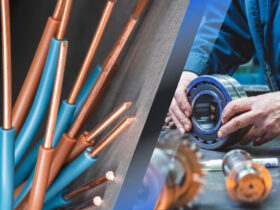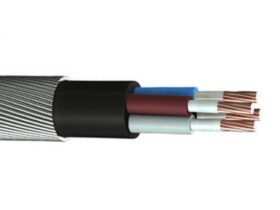In today’s interconnected world, where technology reigns supreme and communication is seamless, we often take for granted the complex web of wires and cables that enable this connectivity. Whether it’s the internet, electricity, or data transfer, these unassuming components form the backbone of our modern lifestyle. However, what might seem like a mundane part of our infrastructure holds a pivotal role in determining the efficiency, reliability, and safety of our systems. This is where the significance of quality in wires and cables truly comes into play.


1. Reliability and Performance
Imagine a scenario where your internet connection drops intermittently, or the power supply in your home is constantly flickering. These disruptions can be traced back to the quality of wires and cables. High-quality cables are engineered to transmit signals consistently, without interference or signal loss. They maintain their performance even under challenging conditions, ensuring that your internet connection remains stable, and your devices function seamlessly.
2. Safety First
One of the most compelling reasons for investing in quality wires and cables is safety. Poor-quality cables can lead to short circuits, electrical fires, and other hazardous situations. When cables are manufactured using subpar materials or lack proper insulation, they become prone to overheating and melting, increasing the risk of accidents. Quality cables adhere to safety standards, minimizing the possibility of such incidents and ensuring the safety of your property and loved ones.

3. Longevity and Cost Efficiency
While the initial cost of quality cables might be higher, they provide a substantial return on investment in the long run. High-quality materials and superior craftsmanship enhance the lifespan of cables, reducing the need for frequent replacements. Cheaper alternatives might save money upfront, but their shorter lifespan can lead to higher expenses over time due to replacements, repairs, and potential damages caused by their failure.
4. Data Integrity
In the digital age, the integrity of data transmission is paramount. Low-quality cables can result in data corruption, signal degradation, and slower data transfer speeds. This is especially crucial in industries such as telecommunications, finance, and healthcare, where the accuracy and speed of data transmission are essential. Quality cables ensure that your data remains intact and transfers swiftly, maintaining the efficiency of your operations.
5. Environmental Impact
The environmental impact of using quality wires and cables is often overlooked. Durable cables contribute to reducing electronic waste. Frequent disposal of cheap, malfunctioning cables can lead to greater accumulation of e-waste, which is harmful to the environment. Opting for high-quality, longer-lasting cables reduces the strain on resources and helps minimize electronic waste.
6. Adaptation to Technological Advances
Technological advancements are a constant in today’s world. Devices and systems are becoming more sophisticated and demanding in terms of data transmission and power requirements. Quality cables are designed to meet these evolving needs, ensuring compatibility with the latest technologies and preventing the need for constant cable upgrades.
In conclusion, wires and cables are the unsung heroes that enable the functioning of our technologically advanced society. Their quality directly impacts our safety, efficiency, and convenience. Investing in high-quality cables might seem like a small decision, but it has far-reaching effects on the reliability of our connections, the safety of our environments, and the overall sustainability of our technological ecosystem. So, the next time you’re tempted to cut corners on cables, remember that quality isn’t just a luxury – it’s an essential component of modern living.












Leave a Reply